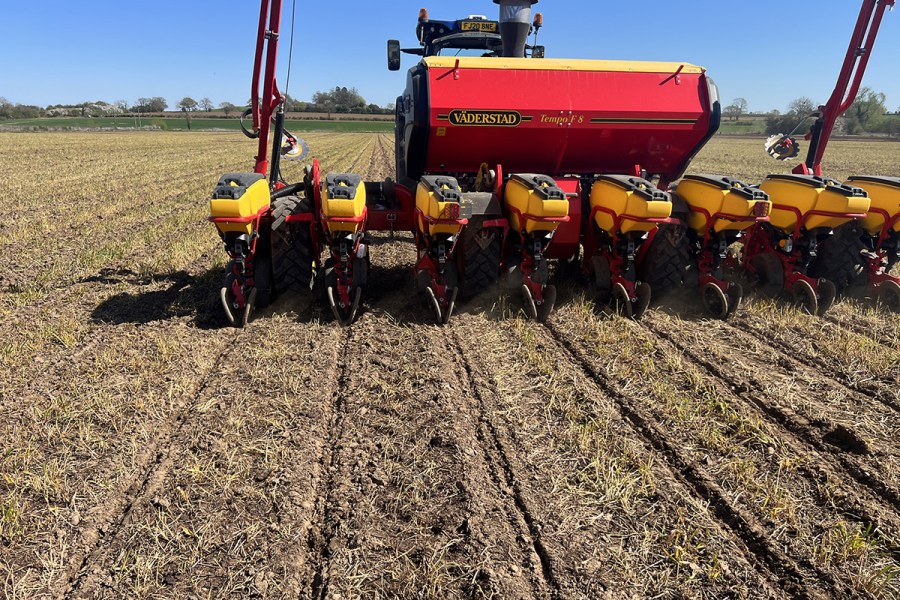Maize is known for being a high-risk crop in relation to soil erosion but using cover crops and strip tilling could offer a solution. CPM speaks to a farmer who’s trialling different approaches to produce grain maize in a soil-conscious and profitable manner.
“People normally say that maize is a take, take, take, crop, but we’re putting 90% of it back into the ground.”
By Melanie Jenkins
With improving soil health as a motivator, Will Oliver is always looking to try new things on his farm near Market Bosworth in Leicestershire. This year he’s put in strip tilled maize trials for the first time to find out what impact the technique could have on his maize yields and soil health.
Will farms around 810ha of largely clay loam soils, growing winter wheat, grain maize and winter beans, alongside a poultry unit and diversified glamping business. Four years ago he switched from growing oilseed rape to grain maize after struggling with the crop.
With a readily available market through GLW Feeds on his doorstep and a contract with Frontier, grain maize has proved a successful alternative, and he now feels there’s enough demand on the open market to give him an additional option.
“We’ll continue to bulk sell to Frontier and will keep the hectarage the same, but if we have the perfect conditions then we might go back to growing some OSR, however, it would only be to help the rotation, so beans are no more than one in five.

A 10ha field was strip tilled to 20cm using a Horizon SPX strip-till cultivator on 21 April of this year.
“We started out growing 20ha of maize which yielded 8-9t/ha of grain, so the year after we put in 202ha,” says Will. “It’s proved a good break crop for us and, although there are challenges with the later harvest, it’s brought benefits in terms of blackgrass control and it has a reduced fungicide spend.
“Our wheat yields are less than they were after OSR but it’s correspondingly costing us less to grow now. Maize has also helped to spread the workload, meaning we’re still busy until November, plus it utilises the combine and the staff like it.”
Will uses organic manures, sewage sludge and digestate applied in the spring to get the best out of his maize crops. “We grow it largely without bagged fertiliser as this is better from a cost of production point of view – it makes financial sense to not have to buy in ammonium nitrate.”
Normally everything is cultivated with a Väderstad TopDown and, if necessary, Will goes over it with a Väderstad Carrier. Up until now he’s been using contractors to drill the maize to see which drill fits best on farm. “The contractors use a Väderstad Tempo, some with DAP down the spout and some with a micro-granular fertiliser. We want to invest in our own drill for the maize but haven’t done so yet.”
For the first time, Will has had a 10ha field strip tilled to 20cm depth with a Horizon SPX strip-till cultivator on 21 April of this year. “Half this field was then drilled with the Tempo using RTK guidance on 22 April, and the remainder was drilled using a Horizon PPX precision planter on 2 May,” explains Will. “The hope is that this could further help improve soil health. In theory, maize is a lazy rooter so we’re just doing the work for it, but only where it’s being planted.
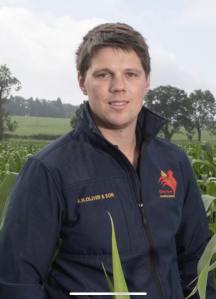
Will Oliver is always looking to try new things on his farm and this year he’s put in strip tilled maize trials for the first time.
“We’re also trialling a number of different varieties and are currently (as of early May) about halfway through planting five: KWS Anastasio, Resolute, Prospect, ES Constance and LG30.179. I’m looking for decent standing power, good starch levels and a nice even cob because we’re taking the cob and leaving the rest of the plant. Maize isn’t like wheat, there’s no AHDB Recommended List, so we have to try a few things to know what suits our niche market.”
To help provide ground cover and nourish soils before the maize is drilled, Will plants cover crops over winter. “We take the wheat off and put in a rye and vetch mix immediately afterwards. We lightly graze the cover crop with a neighbour’s sheep, taking them off after a short time. After there’s regrowth, the sheep are put in a second time and this leaves the ground in a nice condition.
“We don’t plant the cover crop overly thickly, just enough to keep the sheep happy, give the ground some cover and to get roots down, plus the vetch puts nitrogen into the soil,” explains Will. “I took some offcuts from the cover crop and there was 49kgN/ha in the canopy, so it’s holding N where we want it to.”
As well as providing benefits to the soil, growing a cover crop fits with the Sustainable Farming Incentive. “It works quite well,” he says. “We’re planning to keep our cover crop mix the same as we don’t want to add legumes or brassicas as these would affect our rotation.”
Come spring, the cover crop is sprayed off with glyphosate. “We did this in March this year and then spread muck on the field which was then incorporated and drilled into.”
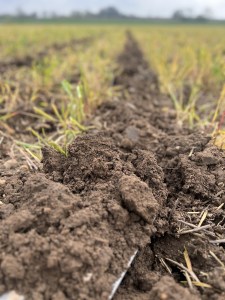
The hope is that strip tilling maize could further help improve soil health on the farm.
Ideally, Will plants winter wheat right after the maize and he’s ordered a Horizon DSX direct drill which should cope with the trash and take the pressure off from having to cultivate in the back end of October or into November.
“We used to TopDown the maize residues and then use a Horsch Sprinter to drill the wheat, but this will now be direct drilled. We’ve also started using molasses and microbes in an effort to pay more attention to soil biology and help break down the maize residues faster, which we’re still finding in the ground two years after growing it. The maize has meant we do require more N because more material is going into the soil which takes N away from the crop while it’s breaking down, but we have manures at our disposal.
“People normally say that maize is a take, take, take, crop, but we’re putting 90% of it back into the ground,” says Will. “And because our combine is tracked, we’re able to take the maize grain back to the gateway to unload without making a mess. We only combine as much as we know we can get dried, so we’ll only be going for four to five hours a day.”
Because the maize is being combined for grain, Will is able to get accurate yield maps. “We’ve noticed that there are variabilities, so last year we trialled growing 20ha under film, hoping for a yield benefit. Unfortunately, the crop ended up full of weeds and, although we were able to harvest it earlier than the rest of our maize, there was no increase in yield.
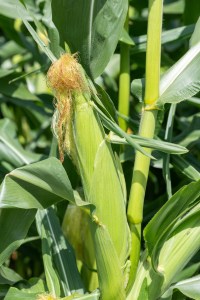
Grain maize is proving to be as profitable as wheat on the farm.
“I’m part of the Maize Growers Association and I’m trying to learn all the time. There are a few others who are growing grain maize around the country, so speaking to them helps.”
The main downside of growing grain maize for Will is the drying costs. “We have a grain drier on farm and it cost us £40/t to dry it last year, but we know that we’re going to have to dry it so we can prepare for the cost. We received £285/t for maize grain last year and the year before it was £160/t. The November price for maize and wheat recently came in at £260/t and £190/t, respectively.
“Margin-wise, grain maize is as good as wheat,” says Will. “It just takes a bit of getting your head around, but we’re lucky to have a drier so we can cope with it and it’s a crop we can grow year-on-year.”
The only major investment Will’s had to make has been a new header for the combine, which cost him £50,000. “Any other necessary tweaks we’ve done in-house,” he explains.
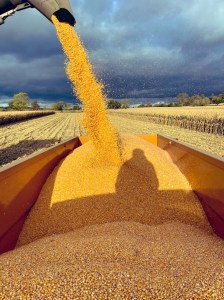
Maize is grown for grain and is sold to nearby GLW Feeds and has proved to be a successful alternative to oilseed rape.
To further aid soil health alongside experimenting with drilling maize, Will has started to do quite comprehensive soil testing. “I’ve been testing for organic matter and standard soil testing for N, phosphate and potassium, for a while. We’ve seen one field go from 2.5% SOM up to 4.2% in four years, which is basically a result of adding beans to the rotation, utilising organic manures, doing less intensive tillage and direct drilling where possible. However, the compromise is that we have to incorporate the manures, but overall we’re definitely doing less cultivations.”
This year Will is going to start testing total carbon, organic carbon, carbon-to-nitrogen ratio, total carbon stock, active carbon, bulk density, CO2 respiration, microbial biomass and potentially mineral N. “I feel that we have to start collating the data now as it could be really valuable to our farm and the business going forward.”
As for the maize, Will’s invested in the crop. “It’s part of our rotation now, but the strip till trials will have to produce good establishment and yields to sway our decision into planting more like this.”
And even if they don’t yield better, he feels strip tilling will be cost saving compared with conventional establishment. “We know that it’s cheaper as there are fewer passes, less fuel is used and it should generally improve soil health. It’s not the same as direct drilling but it’s as close as we can get.”
Undersow for soils
The result of waterlogged soils unable to support the weight of machinery is the proverbial nightmare associated with maize harvesting.
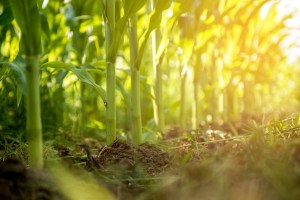
Undersowing maize involves adding a whole new crop to the system, meaning there’s an active root mass to enhance soil structure.
“A lot of these situations can be mitigated by undersowing with grass,” explains John Myhill of Horizon Agriculture and Maize Growers Association (MGA) agronomist. Speaking at an MGA webinar in mid-May, he explains how undersowing grass can be effectively utilised to prevent soil erosion, waterlogging, compaction, and surface run-off, while helping to improve soil fertility and organic matter.
“With undersowing, a whole new crop is being added to the system, meaning there’s an active root mass to enhance soil structure, resulting in better travelling conditions during harvest, less mud on the road, and it can provide livestock forage over winter.”
John advises identifying high risk fields and locations that may enhance run off into water courses or cause issues on roads, such as those with slopes. “But remember it’s not possible to undersow every field, so consider your cultivations and what plans you have come the autumn.”
Although some may look to put in an autumn or cover crop after maize, in situations where a late maturing maize variety is in the ground, undersowing grass might be a better option rather than risk being unable to drill in the autumn, he suggests.
A grass crop should never be drilled at the same time as the maize as they will compete and the maize will get stressed, reducing yields by up to 40%, warns John. “Grass should only be undersown once the maize crop has been established and after herbicides applications have finished, from the four to six leaf stage. In heavy grassweed situations, where a second post-emergence is required, it’s advisable to delay undersowing until the six to eight leaf stage, but this will mean planting a faster growing grass variety at a higher seed rate.”
The main grass varieties used for undersowing are Italian ryegrass, fescues, ryegrass with clover, Westerwolds, rye and vetch, says John. The MGA is also looking at using barley and oats.
To get the most from undersowing, John advises using a suitable drill. “The greatest success you’ll have is from using a drill that’s placing the seed in the ground, and you want to be locking in moisture as you’re drilling at a time when moisture is limited.”
But John also points out high seed rates aren’t necessary. “Don’t worry too much about seed rate, stick to 10-14kg/ha as you’re not after a thick cover as the grass will tiller, plus you’ll want to keep costs relatively low.”
There’s some concern that undersowing could impact maize yields, with various reports indicating different results, says John. “MGA internal trials in 2021 showed there was no difference to dry matter yield when 10kg/ha and 20kg/ha of Italian ryegrass was undersown using a Weaving disc drill. Just don’t under sow too early as this will impact yields.”
As well as providing enhanced soil structure, undersowing grass helps to build fertility and adds value once it’s been destroyed and incorporated, says John. “Although less trials work has looked at how much nutrition undersowing captures, some has demonstrated that it can pick up 30-40kgN/ha that would otherwise have leached over winter.
“An ADAS and Anglian water research paper suggests undersown grass captures between 18% and 58% more N that conventional practice and that surface run off is reduced by 40-90%, while sediment loss can be 60-85% less than where only maize is planted,” he explains.
Another benefit of undersowing is that it can tick a few Sustainable Farming Incentive options. “It either comes under companion cropping, which is worth £55/ha, or as green cover over winter which is eligible for £22/ha, meaning there’s financial support for it.”
This article was taken from the latest issue of CPM. For more articles like this, subscribe here.
Sign up for Crop Production Magazine’s FREE e-newsletter here.

